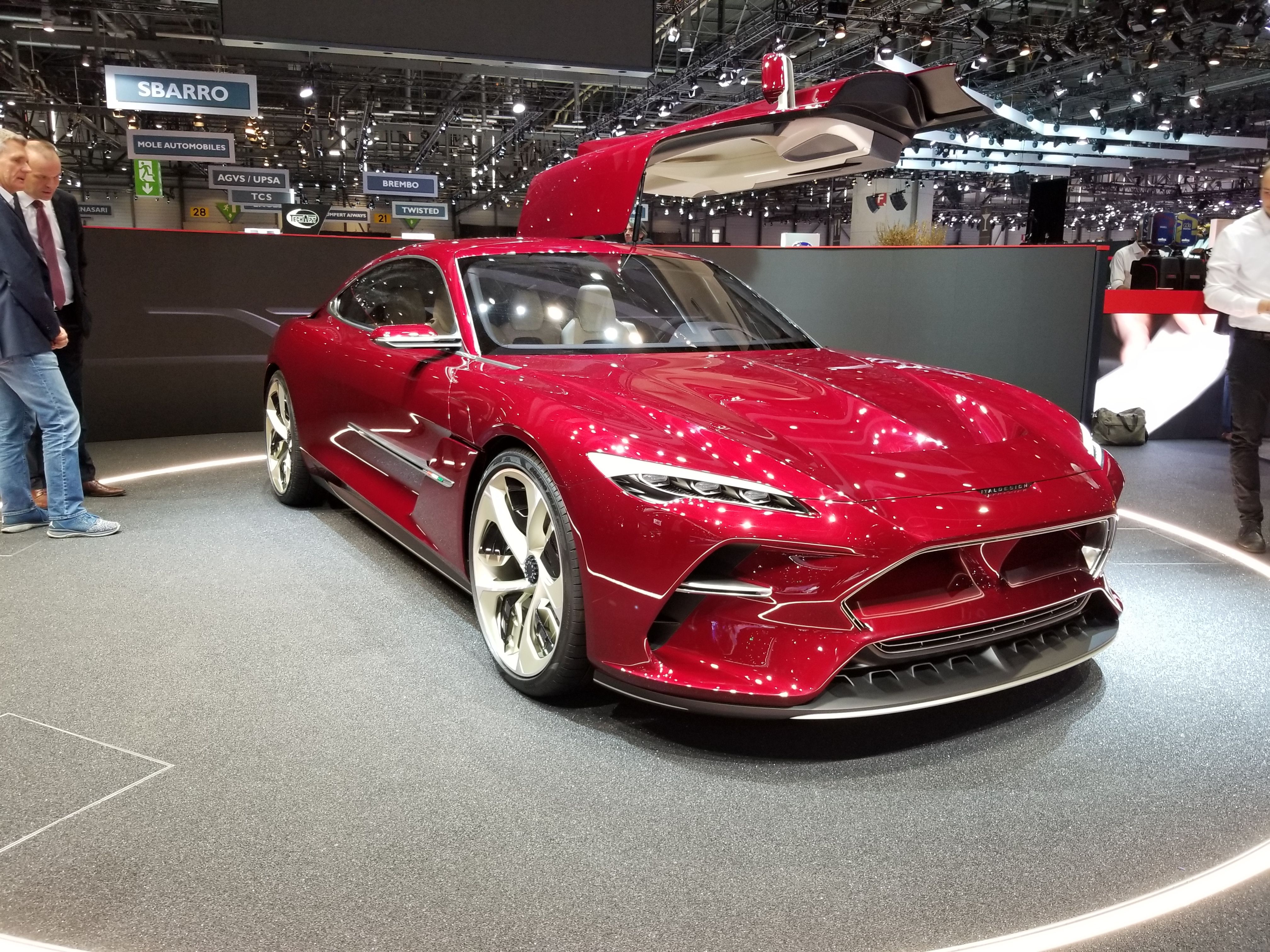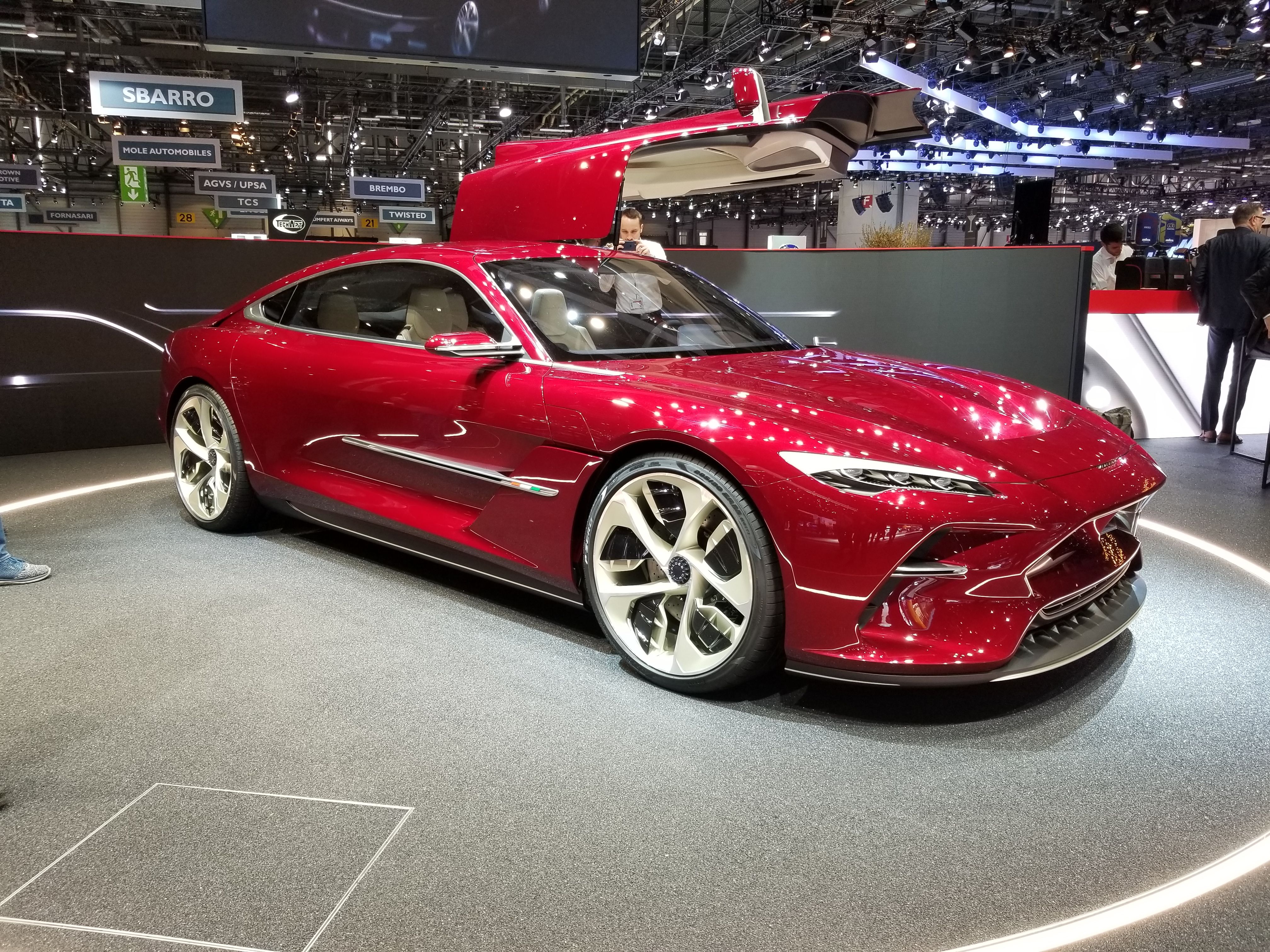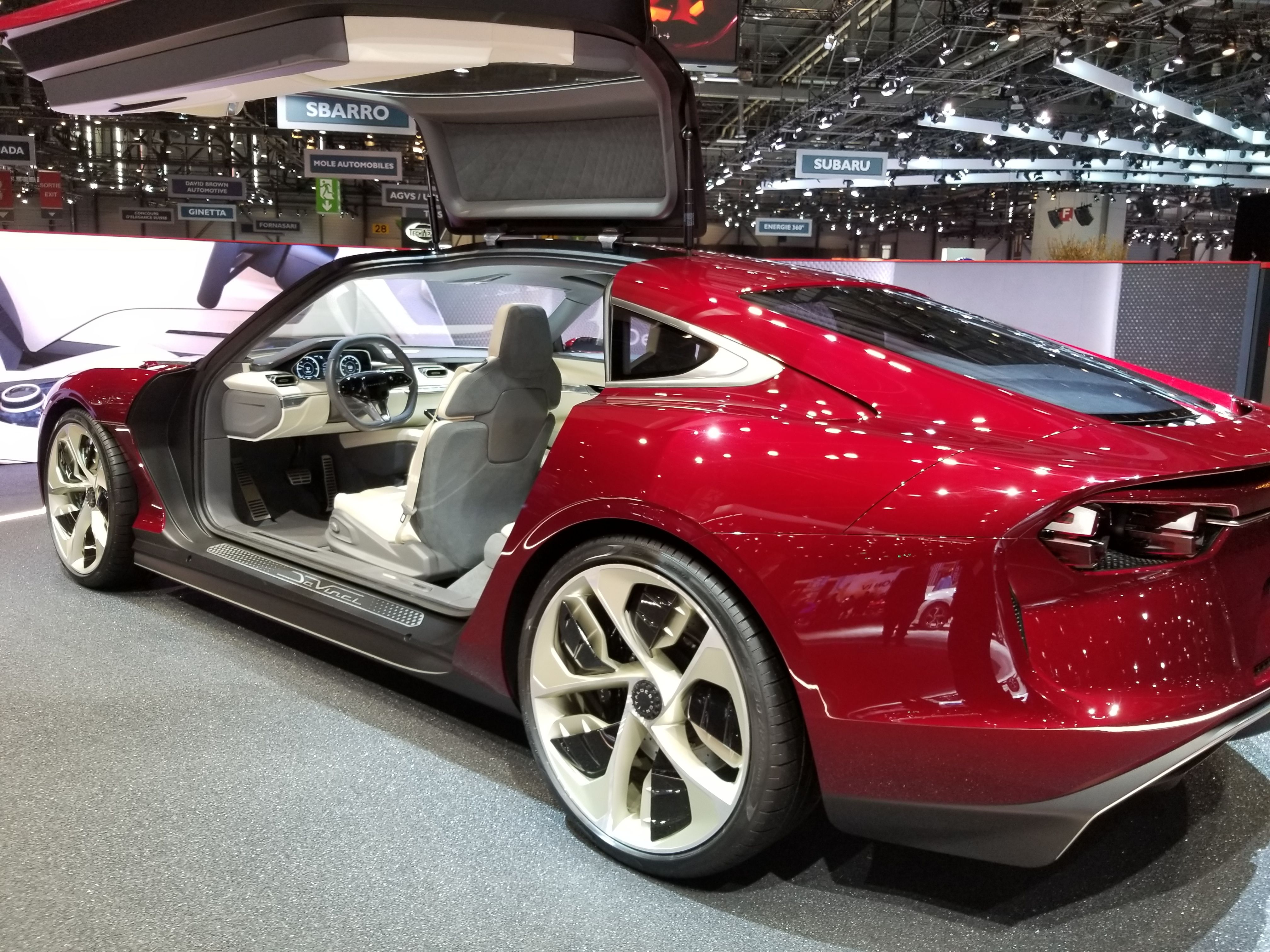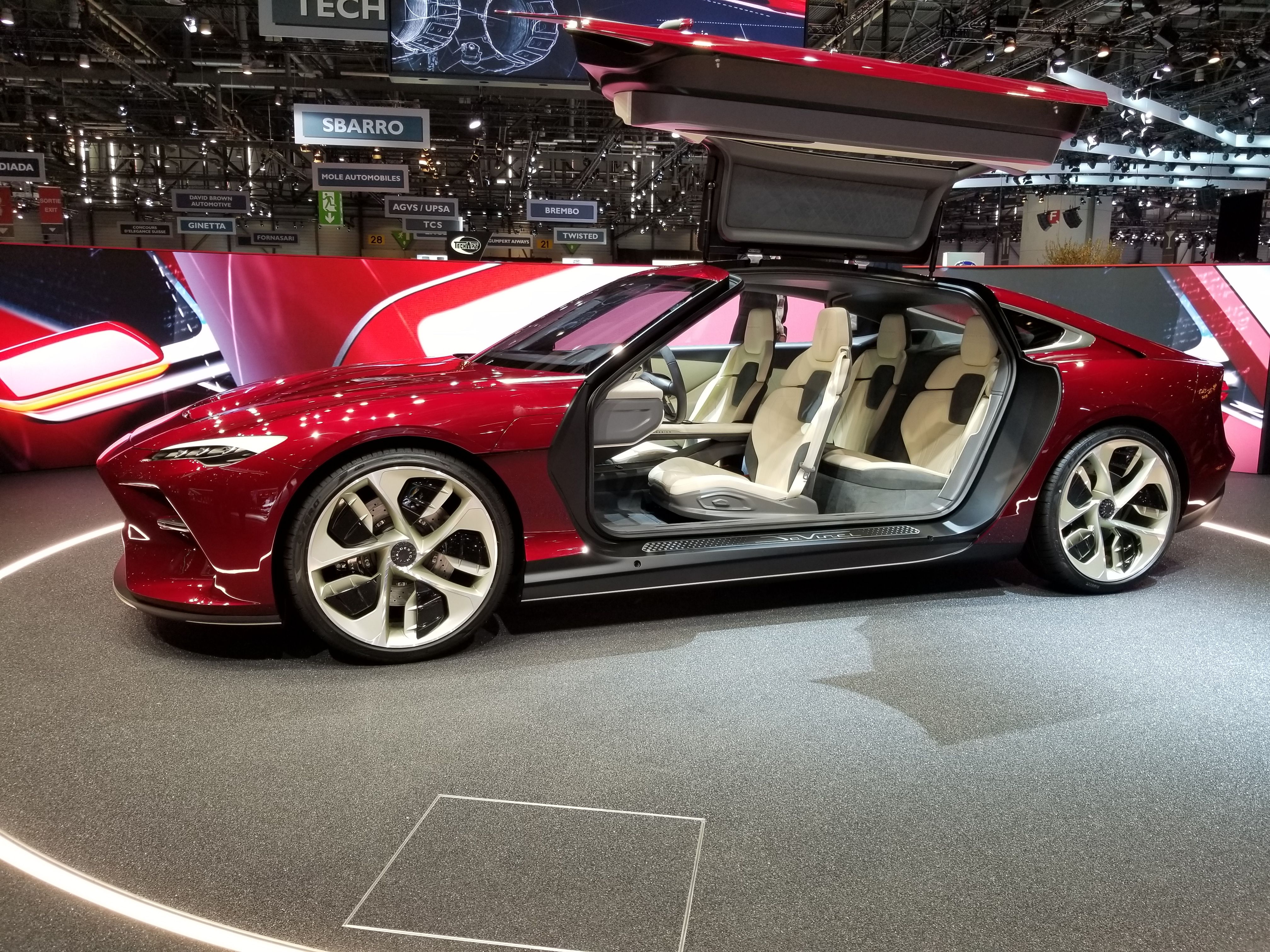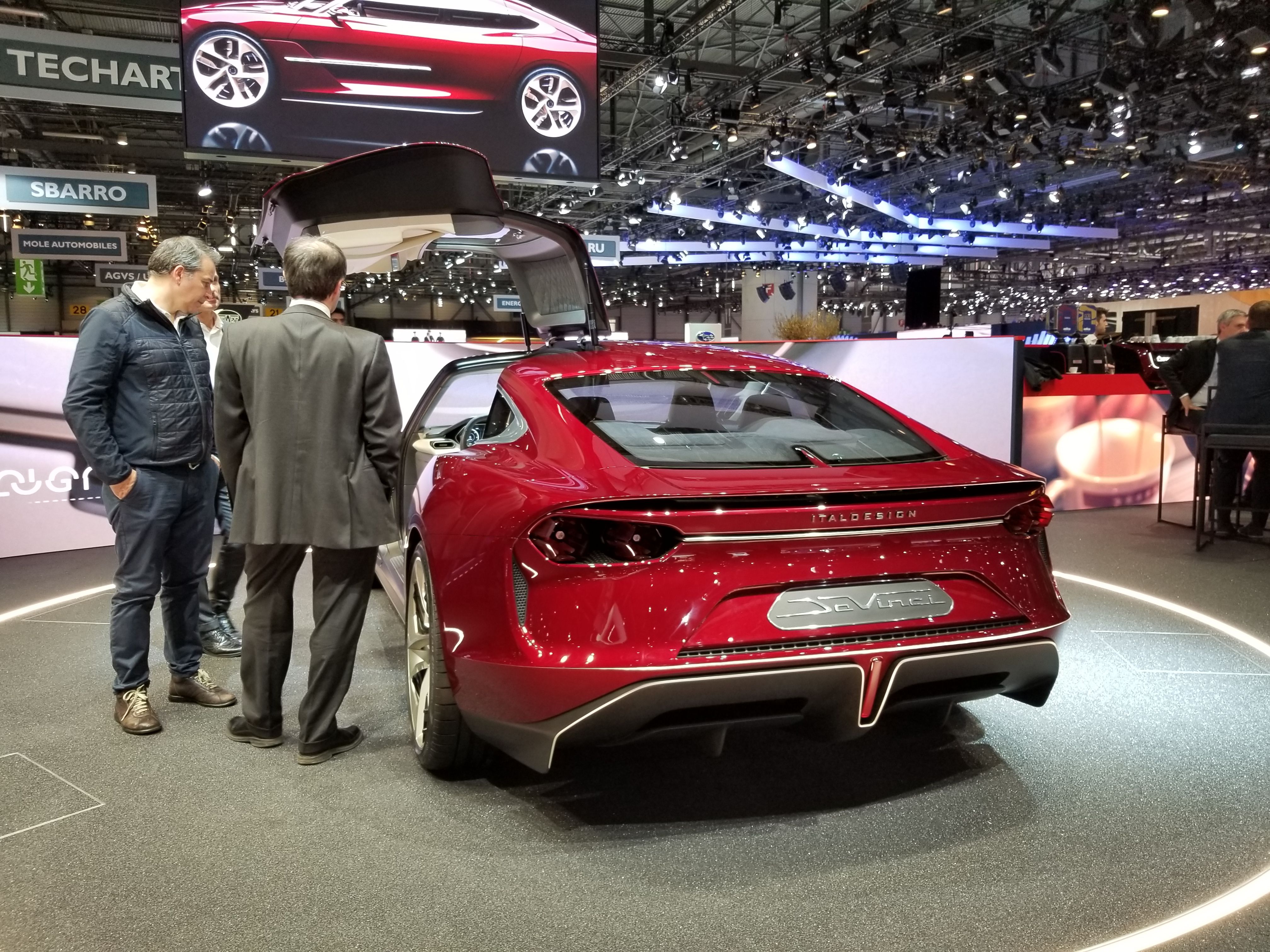Italdesign Automobili Speciali brought to the Geneva Auto Show a genuine four-seater grand tourer sporting an elegant yet aggressive line and massive butterfly doors. This is only the second bespoke Italdesign concept shown since the company set about building low-volume automobiles a couple of years back.
Italdesign has been, for the past four years, an enterprise no longer associated with legendary designer Giorgetto Giugiaro but you wouldn't tell by looking at the DaVinci, the elegant 2+2 sports car the Italians brought to the Swiss show this year. You could argue that the front end is a bit too busy but, other than that, we're looking at a cherry red beauty, one that we were very keen to see in the flesh.
Italdesign brings the Lady In Red to the 2019 Geneva Auto Show
We're getting more than a fair share of stunning concept cars at Europe's top auto show that has reached the 89th edition.
For reasons related to the color and the way the doors open, Italdesign's DaVinci concept reminds me of the Citroen C-Metisse. The C-Metisse, that won the Louis Vuitton Classic Concept Award in 2006 awarded to the best concept car of the year, is, looking back, nothing more than a car which we can use to gauge our progress: Citroen unveiled the four-door luxury model and immediately boasted about its hybrid powertrain with motors placed in the back. However, the ICE on the C-Metisse was, as it happens, a diesel. Amazing to think just how much things can change in little over a decade.
So, back to the present day and the DaVinci, courageously named after Italy's (and maybe the world's?) most famous inventor. Frankly, I think Italdesign maybe went a little bit too far with the name because, let's be honest, if you are to name a car the 'DaVinci' that car must, somehow, both fly, dive underwater and act like a submarine, and then get back on the road and be driveable in the inner cities to make justice to Leonardo's name.
"We wanted to pay homage to Leonardo's genius by symbolically dedicating this vehicle to him," said Filippo Perini, Italdesign's Head of Innovation Design quoted by Carbuzz. "Leonardo was an ante-litteram engineer, an eclectic personality whose interests ranged from painting to sculpture, architecture, graphical design and experimentation. His eclectic approach is a strong inspiration for our day-by-day work." It's no coincidence that the car debuts in 2019 when we mark 500 years since the passing of Leonardo.
Looking at the DaVinci from the front you can't help but start browsing through your head to find a car that shares the hexagonal mouth that dominates the fascia. In itself, this opening is quite intricate as it incorporates the lower edge of the front bumper which climbs up in the middle of the fascia to allow for a grey splitter to emerge. There's also a central pillar within this opening that tells air what to do and where to go. The splitter is housing no fewer than eight hexagonal inlets, all in a recessed position below the chromed border of the main opening.
Away from the front end, the DaVinci shows a great deal of restraint in terms of how many holes pierce through the body and how many razor-sharp creases and design lines cross certain body panels. From the side, you'll notice one double chromed bar (complete with Italy's flag) that goes halfway across the door, passing over the vertical winglet that rises from the rocker panels.
The doors go up and allow unbridled access to the high-tech interior of the DaVinci. There's no B-pillar so once the doors are up, you can climb in the front or in the back with ease.
Once you climb back out, you come to appreciate the sloping roofline of the DaVinci that leads the eye to stubby tail in true GT fashion. Aft and below of the rear pillars there are small air vents that mimic the shape of the window frame. In the back, quad explosive design taillights rest in cavities of the rear fascia, immediately underneath the rounded active spoiler. They are connected by a stylish chromed bar. It's interesting to notice the appendices that cut through the rear window both just above and just below it. A similar vertical element separates the two ducts of the massive diffuser in the back that features partially hidden openings and two fins on each side.
Overall, the car looks really good and that's also down to the big turbine rims (wrapped by Pirelli P-Zero Elect tires) with five blade-like spokes with dark covers, strakes, and micro-openings. Details such as those really take quite a bit of time to sink in and this is what I like in the year 2019: cars that are full of nice, little details that don't blast into view upon first laying your eyes on the vehicle.
What's Italdesign been up to lately?
Well, the company seems to have regained some traction after the split with Giugiaro in 2015. Talking about Giugiaro, the apparently ageless designer and his son are also exhibiting a concept at the Geneva Auto Show, namely the Kangaroo. With this being said, since 2016's Audi Q2, Italdesign didn't land a job with any major manufacturer and you can tell they're vying for a big gig to arrive sooner rather than later.
That's partly because 2016 was also the year when Italdesign launched the 'Automobili Speciali' division that "will feature on all vehicles constructed in ultra-low series production, aimed at a number of selected collectors." From this skunkworks came the Zerouno model in 2017 and, one year later, the Zerouno Duerta. Both are based on the architecture and drivetrain of the Lamborghini Huracan and both were duly sold out before they were even shown to the public - despite costing about $1.7 million (the coupe) and $2.4 million respectively (the spyder).
Italdesign only announced it will build five examples of both the Zerouno and the Zerouno Duerta, so the Italians don't really swim in cash thanks to their first bespoke supercar and this is why there is no rush to put the DaVinci into production. But that doesn't mean we shouldn't expect more 'special' vehicles to come out of the 'Automobili Speciali' division in the near future. Historically, big design house would always make sure they had a new prototype ready for every auto show. Italian houses, for instance, were always interested to bring something new to the Turing Auto Show and, now, Geneva seems to be the home of outlandish supercars and concept cars. The DaVinci may not follow strictly into the footsteps of the Stratos Zero, a concept built solely because Giugiaro had to bring something to the 1970 Turin Auto Show, but it still is a concept car built to impress and it does its duty admirably.
A similar endeavor was the 2018 Nissan GT-R50 built to commemorate the GT-R's 50th anniversary and the 50th anniversary of Italdesign. With the R35 generation of Nissan's mythical sports car being extremely long in the tooth by now (it was launched 11 years ago) we thought the concept might preview the R36 generation. Instead, we got a 50-unit limited-run production version identical to the prototype shown at The Quail.
Would that be too much? Well, we just witnessed the launch of the 1-of-1 Bugatti La Voiture Noire that was sold for $18.9 million so a +1 million electric grand tourer is a genuine bargain in comparison. And, anyway, if you are a rich person looking for an electric grand tourer with seating for four and gullwing doors, you don't have much to choose from - and that's not as extreme a client profile as you may think. It just takes the right kind of eco-conscious nouveau-riche individual.
Further reading
Read our full review on the 2019 Nissan GT-R50 by Italdesign.
Read our full review on the 2019 GFG Style Kangaroo.
Read our full review on the 2018 Italdesign Zerouno.
Read our full review on the 2014 Giugiaro Clipper
Read our full review on the 2015 Giugiaro Gea

